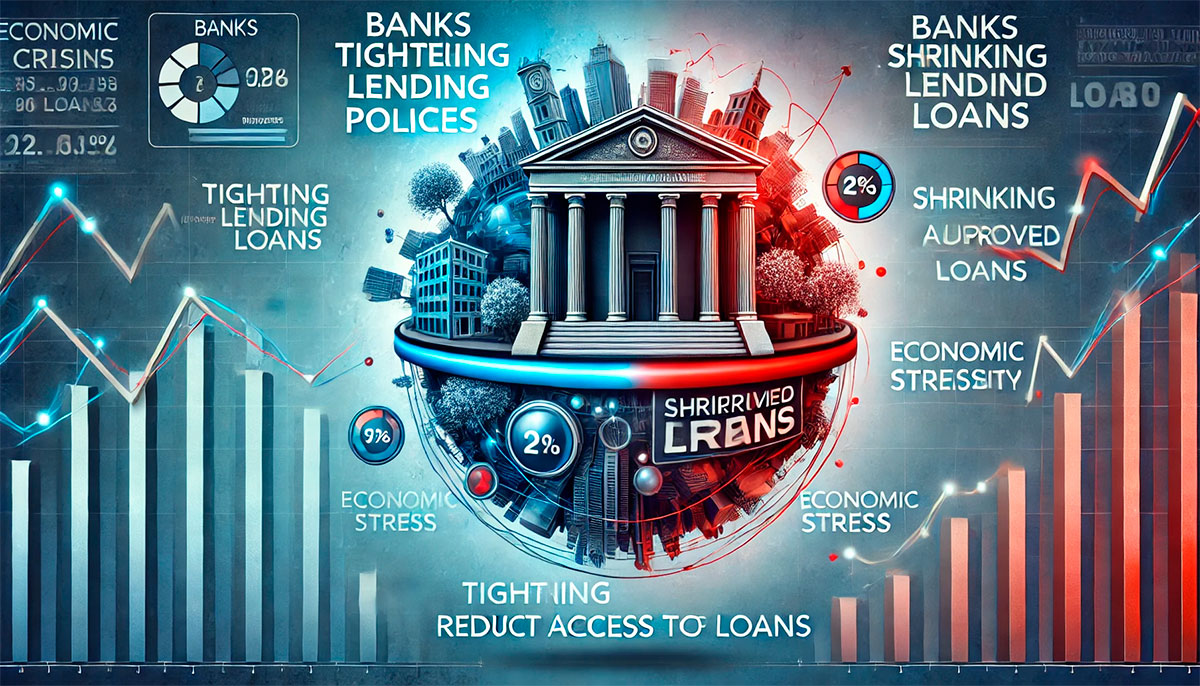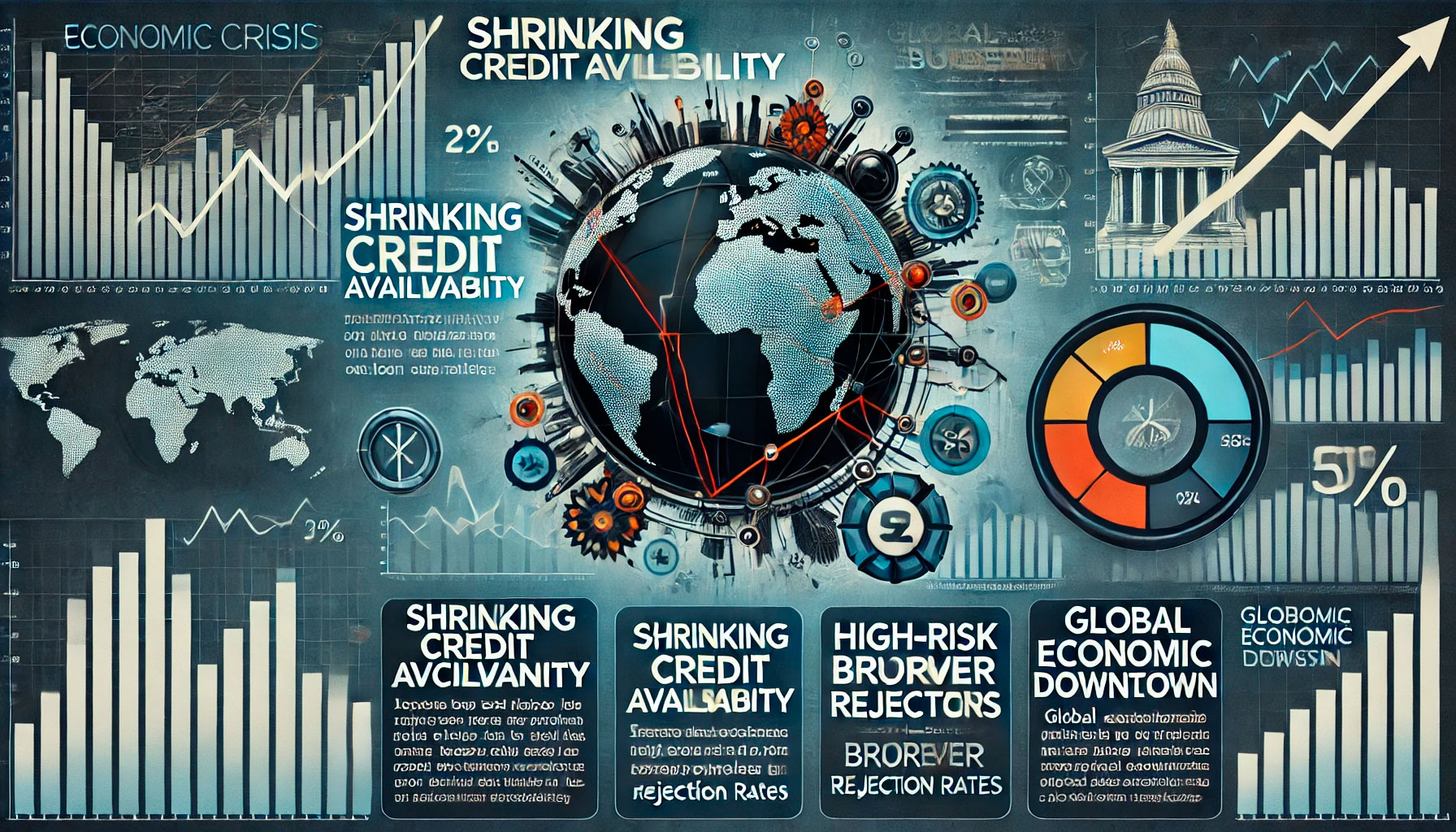Economic crises have the potential to shake the very foundations of the financial system, bringing significant disruptions to various aspects of everyday life. One of the most immediate and far-reaching impacts of an economic downturn is on the accessibility of loans. As markets struggle, businesses close, and unemployment rises, borrowing money becomes increasingly difficult for both individuals and companies. In times of economic distress, lenders become more cautious, tightening their lending criteria and reducing the availability of credit. This article explores how economic crises affect loan accessibility and what this means for borrowers and the broader economy.
The Link Between Economic Crises and Credit Markets
The connection between economic crises and the accessibility of loans can be traced back to the way financial markets react to instability. During a crisis, uncertainty and risk are heightened, leading to increased caution among financial institutions. Banks, in particular, rely on a stable economy to predict the likelihood of repayment on loans. When an economy falters, lenders often worry about borrowers’ ability to meet their obligations, which leads them to tighten their lending standards. In these challenging times, loan approval becomes a much more rigorous process, and many borrowers who would otherwise qualify for credit may find themselves facing rejection.
At the same time, financial institutions may also suffer their own losses during economic downturns. When companies default on loans or experience difficulty repaying debts, the financial institutions that issued those loans also face potential losses. This situation exacerbates the problem, as banks may need to reduce lending in order to protect themselves from further financial strain. Ultimately, a lack of available credit can deepen the economic crisis, creating a vicious cycle that is difficult to escape.
Increased Risk Aversion: Stricter Lending Criteria
One of the most significant ways that economic crises affect loan accessibility is through the imposition of stricter lending criteria. Financial institutions, when faced with economic uncertainty, become much more risk-averse. Lenders who previously offered loans to a wide range of borrowers may suddenly shift their focus to applicants with higher credit scores and more secure financial histories. This tightening of lending standards means that individuals with lower credit scores or uncertain financial futures may find it nearly impossible to access credit. Even those with solid credit histories may struggle to obtain loans due to the increased scrutiny that comes during a crisis.
In addition to stricter credit requirements, banks may also raise interest rates to offset the perceived risk of lending during uncertain times. Higher interest rates are a direct response to the increased probability that loans may not be repaid. For borrowers, this means that even if they are able to secure a loan, they may face much higher costs, which can further strain their finances. The resulting increase in borrowing costs during a crisis can have a chilling effect on both individual and business borrowing, reducing overall demand for credit and further slowing down the economy.
The Impact on Small Businesses and Entrepreneurs
Small businesses and entrepreneurs are often among the hardest hit during economic crises. For many small business owners, access to loans is crucial for maintaining operations, paying employees, and funding new projects. During times of economic hardship, banks and other financial institutions may become reluctant to lend to small businesses due to the perceived risks involved. With stricter lending criteria, small business owners may find it increasingly difficult to qualify for loans, leaving them without the financial resources needed to keep their businesses afloat. As a result, some businesses may be forced to scale back their operations, delay expansion plans, or, in the worst-case scenario, shut down altogether.
Additionally, economic crises often result in reduced consumer demand, further challenging small businesses that rely on loans to weather periods of financial strain. Without the necessary financing, these businesses may be unable to meet payroll, cover operational expenses, or invest in marketing and growth. The inability to access credit during an economic downturn creates a significant barrier for entrepreneurs and small business owners, stifling innovation and economic growth at a critical time.

Government Intervention and Its Effect on Loan Accessibility
In response to the challenges posed by an economic crisis, governments often intervene to stabilize the economy and support lending. These interventions can take various forms, including stimulus packages, lower interest rates, and direct support for financial institutions. In many cases, governments may provide financial institutions with capital or guarantee loans to help encourage lending during tough economic times. While these measures can temporarily ease the credit crunch, they also come with certain risks and trade-offs.
Government interventions designed to increase loan accessibility can help provide relief to borrowers and businesses in need. For instance, during the COVID-19 pandemic, many governments introduced emergency relief packages that included loan guarantees and direct lending programs for small businesses. These initiatives were designed to ensure that businesses could continue to operate despite the severe economic slowdown. However, while such interventions can make credit more accessible, they also risk creating long-term debt burdens for governments and taxpayers, as well as potential moral hazards in the financial sector.
Long-Term Effects: How Economic Crises Shape Borrowing Habits
The impact of an economic crisis on loan accessibility is not limited to the immediate aftermath. In fact, the effects can be long-lasting, shaping borrowers’ attitudes and behavior for years to come. In the wake of a crisis, many borrowers may become more cautious about taking on debt, having witnessed firsthand the challenges of managing loans during difficult times. This shift in behavior can result in a decline in consumer borrowing, which may slow down the recovery of the economy. Businesses may also become more reluctant to take on new debt, especially if they have been burned by previous loans during the crisis period.
At the same time, financial institutions may become more conservative in their lending practices long after the crisis has passed. In an effort to avoid repeating the mistakes of the past, banks may keep lending criteria tight and focus on reducing their exposure to risky borrowers. This cautious approach to lending can have a long-term impact on economic growth, as the lack of access to credit can stifle innovation and hinder the ability of businesses to expand and create jobs. The scars of an economic crisis can take years to heal, and the lessons learned from one crisis often influence the lending behavior of both borrowers and financial institutions in future downturns.
Conclusion: Navigating Loan Accessibility in Times of Crisis
In conclusion, economic crises significantly affect loan accessibility by leading to stricter lending criteria, higher borrowing costs, and reduced financial support for borrowers. The resulting credit crunch can have far-reaching consequences for individuals, businesses, and the overall economy. While government interventions may temporarily ease these challenges, they do not eliminate the long-term effects of a downturn on borrowing behavior and lending practices. Understanding the relationship between economic crises and loan accessibility is crucial for borrowers who must navigate the difficulties of securing credit during times of uncertainty. By adopting prudent financial practices and maintaining a cautious approach to debt, individuals and businesses can better prepare themselves for future economic disruptions.

